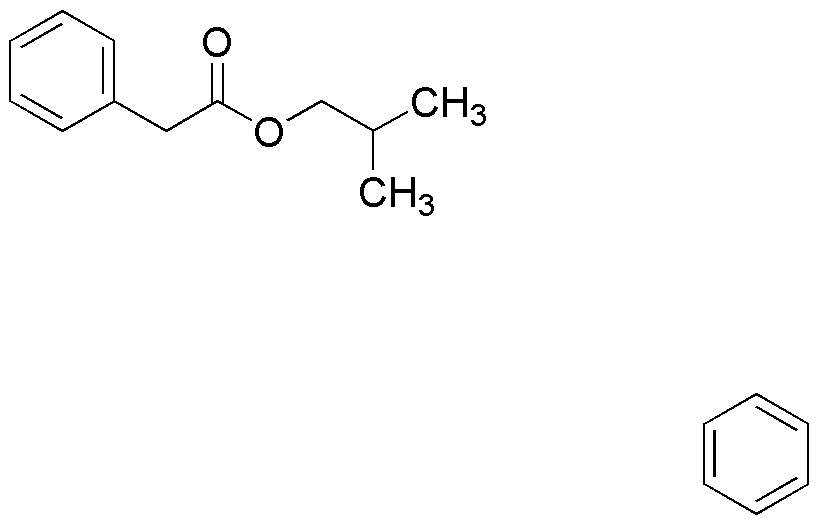Isobutyl phenylacetate is widely utilized in research focused on:
- Fragrance Industry: This compound is commonly used as a fragrance ingredient in perfumes and personal care products, providing a pleasant scent that enhances consumer appeal.
- Flavoring Agent: It serves as a flavoring agent in food products, contributing a fruity and floral note that can improve the taste profile of various items.
- Solvent Applications: In the chemical industry, it acts as a solvent for various organic compounds, facilitating processes such as extraction and formulation.
- Research and Development: Researchers utilize isobutyl phenylacetate in the synthesis of other chemical compounds, aiding in the development of new materials and pharmaceuticals.
- Cosmetic Formulations: It is incorporated into cosmetic products for its emollient properties, helping to improve skin feel and product texture.
General Information
Properties
Safety and Regulations
Applications
Isobutyl phenylacetate is widely utilized in research focused on:
- Fragrance Industry: This compound is commonly used as a fragrance ingredient in perfumes and personal care products, providing a pleasant scent that enhances consumer appeal.
- Flavoring Agent: It serves as a flavoring agent in food products, contributing a fruity and floral note that can improve the taste profile of various items.
- Solvent Applications: In the chemical industry, it acts as a solvent for various organic compounds, facilitating processes such as extraction and formulation.
- Research and Development: Researchers utilize isobutyl phenylacetate in the synthesis of other chemical compounds, aiding in the development of new materials and pharmaceuticals.
- Cosmetic Formulations: It is incorporated into cosmetic products for its emollient properties, helping to improve skin feel and product texture.
Documents
Safety Data Sheets (SDS)
The SDS provides comprehensive safety information on handling, storage, and disposal of the product.
Product Specification (PS)
The PS provides a comprehensive breakdown of the product’s properties, including chemical composition, physical state, purity, and storage requirements. It also details acceptable quality ranges and the product's intended applications.
Certificates of Analysis (COA)
Search for Certificates of Analysis (COA) by entering the products Lot Number. Lot and Batch Numbers can be found on a product’s label following the words ‘Lot’ or ‘Batch’.
*Catalog Number
*Lot Number
Certificates Of Origin (COO)
This COO confirms the country where the product was manufactured, and also details the materials and components used in it and whether it is derived from natural, synthetic, or other specific sources. This certificate may be required for customs, trade, and regulatory compliance.
*Catalog Number
*Lot Number
Safety Data Sheets (SDS)
The SDS provides comprehensive safety information on handling, storage, and disposal of the product.
DownloadProduct Specification (PS)
The PS provides a comprehensive breakdown of the product’s properties, including chemical composition, physical state, purity, and storage requirements. It also details acceptable quality ranges and the product's intended applications.
DownloadCertificates of Analysis (COA)
Search for Certificates of Analysis (COA) by entering the products Lot Number. Lot and Batch Numbers can be found on a product’s label following the words ‘Lot’ or ‘Batch’.
*Catalog Number
*Lot Number
Certificates Of Origin (COO)
This COO confirms the country where the product was manufactured, and also details the materials and components used in it and whether it is derived from natural, synthetic, or other specific sources. This certificate may be required for customs, trade, and regulatory compliance.


